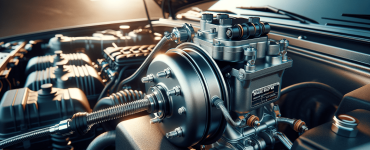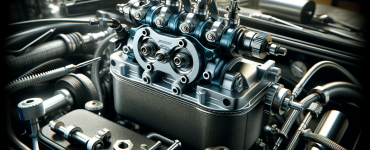Basics of brake upgrades
Upgrading your car’s brake system is a crucial step in enhancing performance and safety. Whether you’re carving corners on a track day or navigating through city traffic, the right brake setup can make a profound difference. Here’s a quick dive into the fundamentals of basics of brake upgrades.
Key Takeaways
| Improvement Area | Benefit | Recommended Action |
|---|---|---|
| Pad & Rotor Upgrades | Increased stopping power & heat dissipation | Use higher-grade materials |
| Brake Lines | More responsive pedal feel | Switch to stainless steel lines |
| Brake Fluid | Better high-temperature performance | Upgrade to a higher DOT number fluid |
| Big Brake Kits | Improved overall braking | Install larger calipers and rotors |
Understanding the Basics

1. Brake Pads and Rotors
Upgrading brake pads and rotors is the first step to better braking performance. Performance pads can offer more bite and withstand higher temperatures, reducing the chance of brake fade.
- Brake Pads: Opt for high-performance materials like semi-metallic or ceramic for better heat resistance.
- Rotors: Slotted or drilled rotors can help dissipate heat more effectively.
Check out the essentials of brake system tuning for more detailed guidance.
2. Brake Lines
The brake lines are your direct connection to the calipers. Upgrading to stainless steel braided lines can improve pedal feel and responsiveness, as they expand less under pressure compared to standard rubber hoses.
Dive deeper into brake maintenance tips and tricks for insights on keeping your brake lines in top shape.
3. Brake Fluid
Brake fluid is the lifeblood of your brake system. For performance applications, a higher DOT number indicates better resistance to heat-induced degradation.
To ensure optimal brake performance, consider upgrading your brake fluid following professional advice found in the guide: tips to ensure optimal brake performance.
4. Big Brake Kits
For those seeking the ultimate upgrade, big brake kits offer larger calipers with more pistons and oversized rotors. This results in increased stopping power and thermal capacity.
Learn more about big brake kits and their installation in everything you need to know about brake repairs.
Real-Life Example
Imagine driving a performance car down a windy road. The upgraded brakes allow for later braking into a corner, translating to faster lap times and a more engaging driving experience.
Basics of brake upgrades: When to Upgrade
- Performance Driving: If you’re taking your car to the track, upgrades are almost a necessity.
- Towing or Heavy Loads: Upgraded brakes can handle the additional stress from weight.
- Old or Worn Components: It’s an opportunity to upgrade when replacing due to wear.
For regular checks and maintenance advice, visit the importance of regular brake checks.
Maintenance is Key
Even the best brake upgrades require proper maintenance. Regular checks and service ensure that every component works as intended.
- Inspect Pads and Rotors: Check for wear and replace as necessary.
- Bleed the Brake System: Replace old fluid to maintain performance.
- Check Brake Lines: Look for any signs of wear or damage.
For comprehensive care tips, refer to the essential guide to car brake maintenance.
Conclusion about basics of brake upgrades
Brake upgrades are not just for enthusiasts; they are a vital aspect of car safety and performance. By understanding the basics and maintaining your system, you can significantly enhance your driving experience.
Remember, safety comes first. Always consult a professional when making modifications to your brake system. Happy and safe driving!




